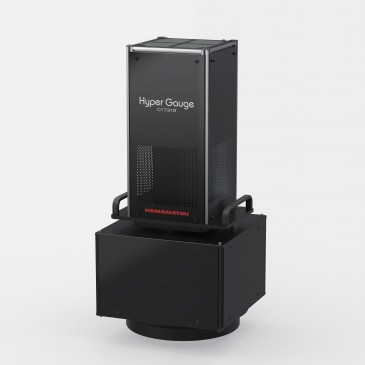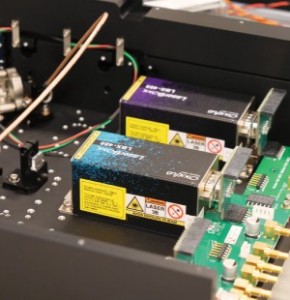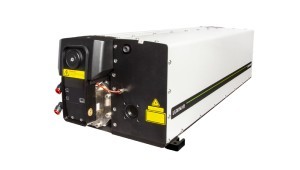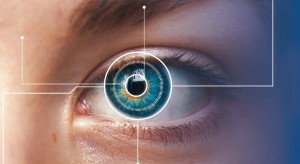
Increasing digitalization and the inherent security risks of character-based and key-based identification systems has led to an increase in biometric identification. Of the known biometrics, Iris recognition stands out as one of the most accurate methods due to the iris’s unique and distinguishable characteristics. However, traditional optical systems used to capture the iris can be expensive, difficult to use, and hard to scale due to focus related limitations.
The use of liquid lenses – as an add on to existing systems or integrated into the optical stack – is changing the industry’s perspective on iris biometrics. In addition, COVID-19 has escalated the need for low-contact and minimally invasive forms of identification. Liquid lens enabled Iris recognition systems are meeting this need by providing an autofocus feature that improves the speed, accurate, ease-of-use, and scalability of the technology compared to systems only using mechanical lenses.
Biometrics for personal identification systems
Biometrics is the science and technology of measuring and analyzing biological data of the human body. The iris carries very distinctive information due to its complex texture. The annular region of the eye, bounded by the pupil and the sclera, is formed during fetal development and stabilizes during the first two years of life. Each iris is distinct, and in a similar fashion to fingerprints, even the irises of identical twins are different.
This unique biological data is extremely difficult to tamper with, making it an ideal identification feature for FinTech, national ID, boarder and passport control, health data and patient ID, suspect identification in criminal investigations, and other high-security applications.
The iris recognition biometric market is expected to witness double digit growth from 2017 to 2024. The global biometrics market is forecast to reach $82.8 billion by 2027, growing at a 19.3 percent CAGR from an estimated $24.1 billion in 2020. Iris recognition is estimated to grow at an 18.8 percent CAGR and reach $10.3 billion by the end of 2027.1
Iris biometrics is extremely accurate and easier to perform than similarly precise analysis such as DNA. However, it is not as widely adopted as fingerprint recognition - which is less accurate and easier to tamper with - due to the cost of iris-based recognition systems. To perform correctly, iris-based systems need to capture high-quality images, which often results in a complex and expensive apparatus. Image resolution and quality of focus are key to deciphering the complex texture of the iris. Use of a liquid lens-based iris recognition device can overcome these optical requirements and decrease the size and cost of the system compared to traditional mechanical solutions
Technical requirements of iris recognition
According to the ISO/IEC (International Organization for Standardization/International Electrotechnical Commission) standard for iris imaging (ISO/IEC 29794-6:2015 Information technology — Biometric sample quality — Part 6: Iris image data): “Sufficient iris-pupil contrast is needed in many implementations of iris segmentation algorithms. Low or insufficient contrast may result in a failure to process an iris image during feature extraction.” Later, this standard states that to decrypt the complex structure of the iris, “defocus should be minimized by placing the subject within the depth of field of the camera” so that the device “shall be able to deliver images that result in a measured Modulation Transfer Function (MTF) with a modulation of more than 50% at 2 lp/mm.”2
As stated above, successful iris recognition requires both a high-resolution image of the eye’s pupil and high-focus quality. The high-resolution necessitates the use of a relatively long Effective Focal Length (EFL) objective lens to have only the eyes within the field of view and avoid having the person right in front of the camera. The ISO/IEC standard for iris imaging also states that “the iris radius shall be at least 80 pixels for the smallest reported human iris of 5.1 mm radius”.3
In contrast to fingerprint reading, where the distance from the imaging system to the hand is fixed, it is hardly conceivable to maintain a perfectly constant distance between the imaging system and the eye. Therefore, the primary optical aberration in this use-case is defocus due to the positioning of the eye at different depths in front of the optical stack. The position of the face can vary between tens of centimeters up to a meter. This aberration is not fixed and varies from one case to another, which makes it impossible to compensate for with fixed optical components.
One solution is to manually adjust focus. However, this is out of the question for large-scale commercial applications. Some of the automatic solutions for focus compensation include motorized systems, like stepper motors or Voice Coil Motors (VCM). These systems will enable full or partial translation of the optical system and compensate for defocus; however, VCMs are more compatible with small and lightweight lenses and are unable to move heavier lenses such as the telelenses required for iris recognition systems.
Additionally, the complex mechanics associated with these solutions result in a bulky system that is often slow, easily breakable, and sensitive to shocks. Finally, moving parts consume high quantities of power and create friction forces which can lead to damage and malfunction after a few hundred or thousand actuations.
A liquid lens solution
Corning Varioptic Lenses are liquid lenses that enable autofocus with a single add-in element. With no mechanical moving parts, a liquid lens can endure hundreds of millions of cycles with low power consumption and at a speed unmatched by conventional actuators. Its robustness and accuracy in autofocus performance makes it well suited for any application requiring large scale autofocus, such as iris recognition devices.
The integration of a liquid lens within the optical system will not directly increase the depth of field, but it will instead allow the device to automatically adjust focus and maximize the sharpness in the region of interest, the user’s eyes. As a result, the working distance is significantly enlarged compared to conventional iris decoding devices with fixed optics.
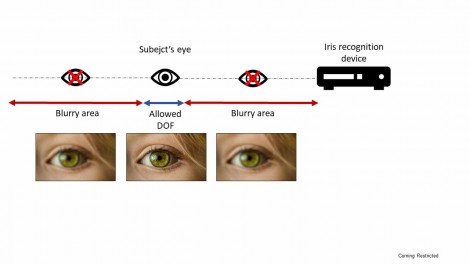
Figure 1: Iris recognition without liquid lens autofocus
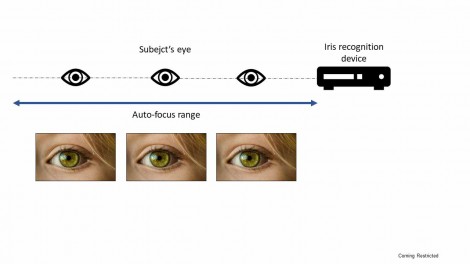
Figure 2: Iris recognition with liquid lens autofocus
Liquid lenses can either be used as an add-on component on top of an existing optical system or as an add-in element within the optical system. Corning Varioptic can offer a variety of lens modules, either as C-mount or S-mount, with different focal lengths. Various autofocus algorithms are already available and different focusing strategies can be adopted to maximize efficiency and should be discussed on a case-by-case basis.
Optimizing focus and maximizing sharpness
Iris recognition is proven to be one of the top choices for biometric identification; yet, technical constraints have limited broad adoption in commercial and government applications. The technology relies on high-resolution images produced by the system to perform an accurate assessment; however, conventional iris recognition devices have trouble capturing a clear image due to a shallow depth of field inherent in their optical characteristics. In addition, applications requiring a fast response time for large-scale continuous identification cannot rely on a complex device without autofocus capabilities. Overcoming these constraints often increases the bulk and cost of the system.
Optical systems using liquid lenses can optimize focus and thus maximize the sharpness of an image. This compact, low-cost, and low-power solution can extend the reading distance from a few millimeters to several meters. Additionally, liquid lenses possess a fast response time, as low as 10 ms, and can perform autofocus in both an open and closed loop system. Liquid lenses can easily be integrated into an existing device or be part of a new product, fully automatic and suited for large scale applications. Learn more on this topic by reading Corning’s white paper on iris biometrics.
Xavier Berthelon, application engineer Optics & Imaging, Corning Incorporated
References
- Burt, C. (2020, October 17). Global biometrics market forecast to surpass $82B by 2027 despite pandemic. Retrieved from https://www.biometricupdate.com/202010/global-biometrics-market-forecast-to-surpass-82b-by-2027-despite-pandemic
- J. Daugman, “New Methods in Iris Recognition,” in IEEE Transactions on Systems, Man, and Cybernetics, Part B (Cybernetics), vol. 37, no. 5, pp. 1167-1175, (2007)
- ISO/IEC JTC 1/SC 37 Biometrics. ISO/IEC 29794-6:2015 Information technology — Biometric sample quality — Part 6: Iris image data. Retrieved from https://www.iso.org/standard/54066.html. (2015)































 Back to Features
Back to Features